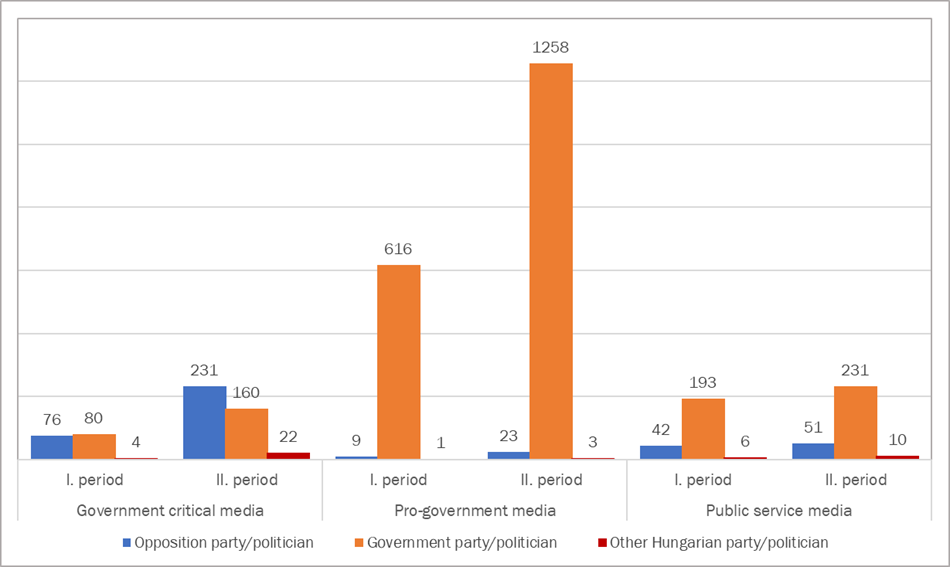NEWS, NARRATIVES, MEDIA 2023-2024
In the framework of the HDMO project, we conducted two four-week content analyses of narratives appearing in the political/public news of eight national news sources in the same period of 2023 and 2024, the second of which was during the campaign period for the European Parliament and local elections. Our aim was to look at the content, whether and how it differs between the campaign period and the previous year, and whether and how the domestic mainstream news media are involved in disseminating political propaganda messages.
We examined eight news sources in the Hungarian media market: among print newspapers, Magyar Nemzet and Népszava; among news portals, 24.hu and Origó; among television channels, RTL and TV2; and two public service media, M1/Duna and Kossuth Radio.
The novel methodology used in the research is described in detail in the published paper (in Hungarian) . It focused on messages and narratives that regularly appear in public discourse, often linked to specific political actors or other public figures. These narratives were placed in a conceptual framework along different categories and then analysed in terms of their representation in different news sources.
Our results show that pro-government and anti-government news sources have significantly different agendas, while public service media agendas are more similar to pro-government media.
Pro-government and public service news sources overlapped in three categories in terms of their most frequently occurring narratives. These were narratives about the government’s political opponents, narratives about the European Union and narratives about Hungary’s positive role in foreign policy, while the most frequent narratives of the anti-government news sources were those about the dysfunctional government and the poor state of public services.
We have also analysed the appearance of different political actors in relation to these narratives. On the one hand, we looked at who speaks the narratives and who are the targets of these narratives, i.e. who they are about and with what attitudes.
The figure shows the political orientation of the narrators of the narratives, according to the political orientation of the news sources.
Appearances of political actors narrating narratives in different media with different political profiles, by period (number of appearances; N=573, 1910, 533)
It can be seen that in the pro-government news sources dominantly the pro-government actors delivered the narratives, and the opposition deliverer of the narratives were almost invisible.
The most common targets of the narratives and attitudes towards them are similar for public and pro-government news sources. Opposition party appearances were dominated by narratives with a high proportion of negative attitudes. In contrast, narratives in government critical news sources were mainly directed at pro-government targets and were also predominantly presented in a negative tone.
Overall, it became clear that in government critical media used much less recurring narrative: domestic political narratives critical of the government were the most identifiable and analysable. In the privately owned pro-government media, the continued use of pro-government narratives was striking, confirming our knowledge that these media are indeed under the influence of the government. Of all the news sources analysed, Origo and TV2 were seen to have significantly “turned up the volume” during the election period: many more relevant news items, many more narratives, many more positive representations of the government and many more negative representations of the opposition – in all aspects analysed, it is clear that these two media were in campaign mode and at the forefront of all the governing party narratives, including war propaganda. The public service media were much more restrained in repeating pro-government narratives, but it was still clear that pro-government messages were much more frequent than anti-government narratives.
Follow us
Follow HDMO on our social channels to stay up to date with our latest news.
